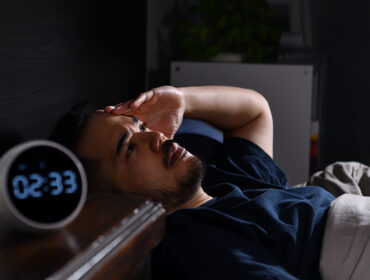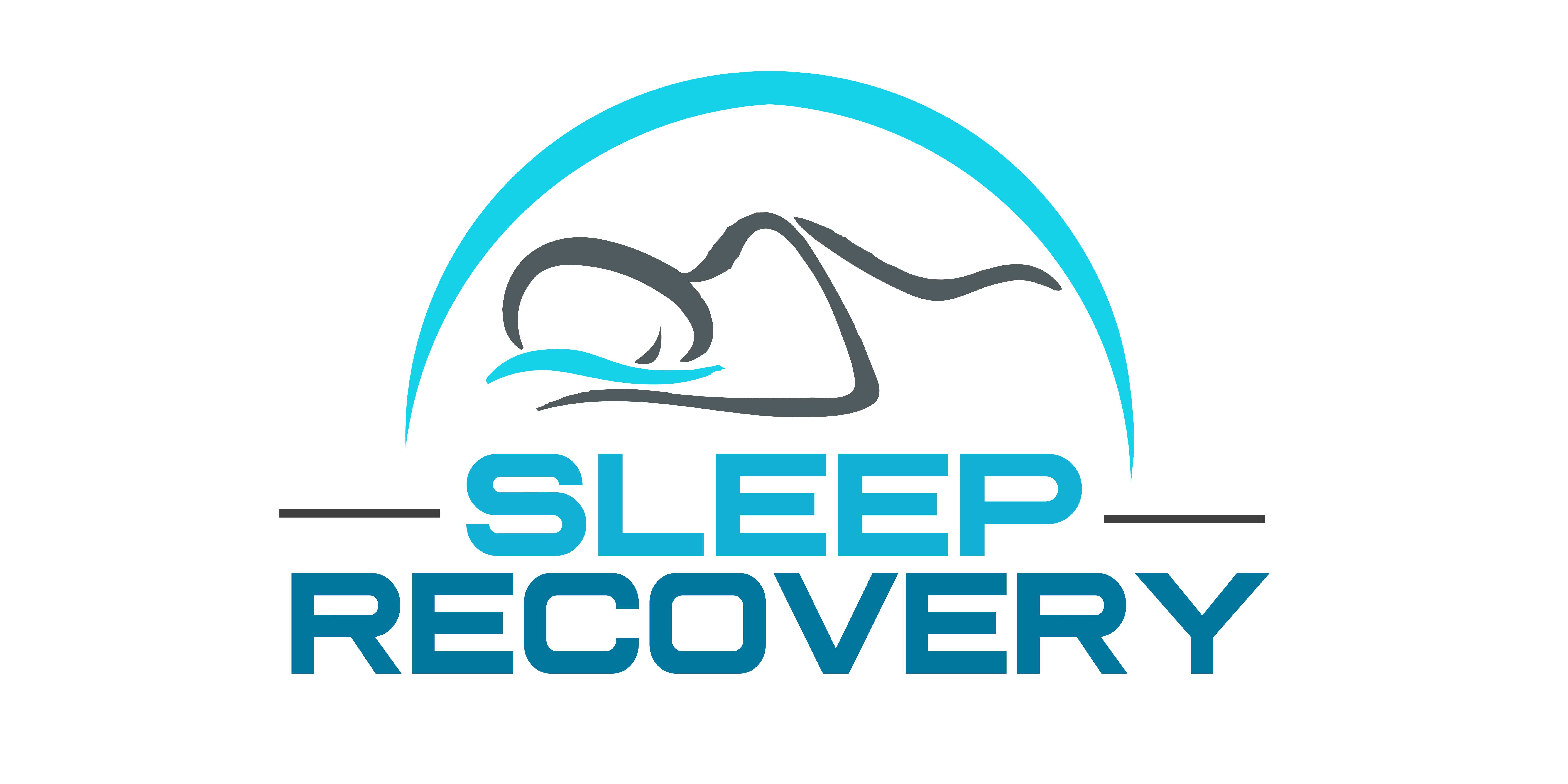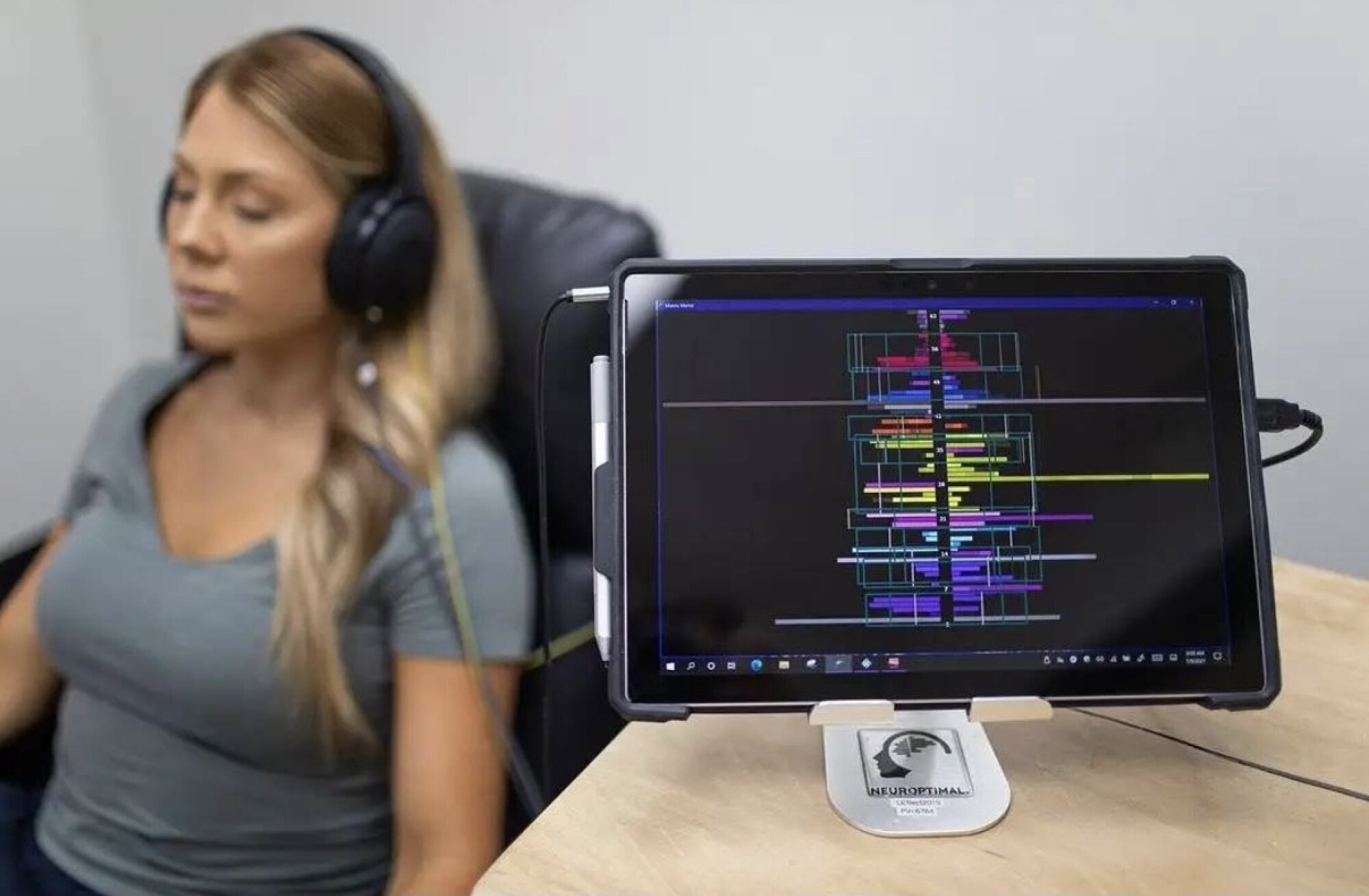Sleep State Misperception: Why Some People Feel Completely Awake During Hours of Documented Sleep

Have you ever woken up feeling like you didn’t sleep a wink, only to have someone tell you they heard you snoring peacefully all night? Or maybe you’ve spent what felt like hours tossing and turning, watching the clock tick by, only to discover you fell asleep much earlier than you thought. If this sounds familiar, you’re not alone and not going crazy. You might be experiencing something called sleep state misperception or paradoxical insomnia.
This puzzling condition affects millions of people who genuinely feel sleep-deprived despite getting relatively normal amounts of sleep. It’s a real phenomenon that can cause tremendous distress, relationship strain, and confusion. But here’s the thing: understanding what’s happening in your brain during these episodes can be the first step toward getting the restful nights you deserve.
The Invisible Struggle That’s More Common Than You Think
Imagine lying in bed, acutely aware of every sound around you—the refrigerator’s hum, your partner’s breathing, the occasional car passing by. You feel completely awake, your mind racing about tomorrow’s meeting or that conversation you had earlier. Hours seem to pass. You check the clock: 2 AM, then 3 AM, then 4 AM. By morning, you’re exhausted and frustrated, convinced you barely slept.
Now imagine going to a sleep clinic and being told that, according to the monitoring equipment, you slept for seven hours with standard sleep patterns. This disconnect between what you experienced and what the machines recorded is the hallmark of sleep state misperception, and research shows it affects up to 50% of people with insomnia complaints.
The condition has gone by many names over the years—subjective insomnia, pseudo-insomnia, sleep hypochondriasis—but the core experience remains the same: your brain is lying to you about sleep. Not intentionally, and not because there’s anything fundamentally wrong with you, but because of complex neurological processes that researchers are only beginning to understand.
Your Sleep-Wake Boundaries Might Be Blurred
To understand sleep misperception, we must examine what happens in your brain during the transition from wakefulness to sleep. This transition isn’t like flipping a light switch—it’s more like slowly dimming the lights while different parts of your brain power down at different rates.
During normal sleep onset, your conscious awareness gradually fades as brain activity shifts into distinct sleep patterns. But in sleep, misperception, something fascinating and frustrating happens: parts of your brain remain in a state of heightened awareness even while other areas enter sleep mode. You’re caught in a neurological limbo where you’re technically asleep but still processing environmental information and maintaining some level of conscious experience.
Research published in scientific journals has identified several factors contributing to this phenomenon. One key finding involves what scientists call “cortical arousal.” Essentially, your brain’s alarm system stays partially activated during sleep. Studies using advanced brain imaging have detected subtle differences in the electrical patterns of people with sleep misperception, including persistent alpha waves (associated with relaxed wakefulness) during what should be deeper sleep stages.
The Clock-Watching Trap That Makes Everything Worse
Here’s something that might surprise you: trying to monitor your sleep can worsen sleep misperception. Researchers have conducted fascinating experiments where they had insomnia patients monitor either a real clock or a fake digital display while trying to fall asleep. Those who watched the real clock consistently overestimated how long it took them to fall asleep compared to those watching the meaningless digits.
This glitch happens because our brains process time during the sleep transition. When you’re lying in bed, aware of time passing, your brain is essentially counting moments of consciousness and using that to estimate total wake time. But here’s the catch: you might be drifting in and out of light sleep stages without realizing it, and your brain fills in those gaps with the assumption that you were awake the entire time.
The Emotional Weight of Not Being Believed
One of the most challenging aspects of sleep misperception is the emotional toll it takes, especially when others don’t understand what you’re experiencing. Many people with this condition report feeling frustrated when family members or even healthcare providers seem skeptical of their sleep complaints. Comments like “But you were snoring!” or “You seemed fine yesterday” can feel invalidating and isolating.
Your experience of feeling unrested and sleep-deprived is entirely valid, even if objective measurements show standard sleep patterns. The distress, anxiety, and fatigue you feel are real consequences of your brain’s altered perception of sleep. Studies have shown that people with sleep misperception often experience stress levels similar to those with objective insomnia despite getting adequate sleep duration.
This emotional component can create a vicious cycle. Anxiety about not sleeping well can increase cortical arousal, making you more likely to remain aware during light sleep stages, which reinforces the perception that you’re not sleeping, which improves sleep anxiety, and so on.
When Sleep Tracking Becomes Part of the Problem
Many people use sleep-tracking apps and devices in our technology-driven world to better understand their sleep patterns. While these tools can be helpful for some, they can sometimes complicate sleep misperception issues. Consumer-grade sleep trackers often rely on movement and heart rate to estimate sleep stages, but they can’t capture the subtle brain wave patterns contributing to sleep misperception.
You might find yourself obsessively checking your sleep data each morning, looking for validation of your poor sleep experience, only to see graphs showing close to normal sleep duration. This perception disconnect can be confusing and frustrating, leaving you wondering whether to trust your experience or the technology.
The Science Behind Why This Happens to You
Recent research has provided curious insights into the neurological architecture underlying sleep misperception. Scientists have identified a “fault in neuronal circuitry” that prevents the brain from fully transitioning into unconscious sleep states. Think of it like having a car that can’t quite shift into the right gear—it’s moving forward, but something isn’t clicking into place properly.
One study published in Psychosomatic Medicine found that people with sleep misperception show distinct psychological profiles characterized by depressive and anxious-ruminative traits. This doesn’t mean the condition is “all in your head” or that you’re somehow at fault—instead, it suggests that specific thinking patterns and stress responses can influence how your brain processes sleep states.
The research also points to “worry and selective attention” as key factors. When you’re particularly focused on sleep-related concerns—whether you’ll be able to fall asleep, how tired you’ll be tomorrow, what’s causing your sleep problems—your brain maintains a heightened state of vigilance that interferes with the normal transition to unconscious sleep.
The Brief Awakening Mystery
Another piece of the puzzle involves what researchers call “brief awakenings.” Even during regular sleep, everyone experiences short moments of lighter sleep or brief awakenings throughout the night. Most people don’t remember these micro-awakenings, but individuals with sleep misperception appear to be more aware of them. They may string them together in memory, creating the perception of prolonged wakefulness.
Imagine your sleep like a movie with brief pauses for commercials. Most people remember the movie as continuous entertainment, but people with sleep misperception tend to focus on and remember the commercial breaks, making the whole experience feel fragmented and unsatisfying.
Generational and Gender Patterns
Interestingly, research has shown that younger adults are more hyper-focused on sleep misperception, particularly overestimating how long it takes them to fall asleep and underestimating their total sleep time. This issue might be related to the stressors younger people face—career pressures, relationship uncertainties, financial concerns, and social media-driven comparison culture—all of which can contribute to the hypervigilant brain state underlying sleep misperception.
Women also appear to experience sleep misperception more frequently than men, possibly due to hormonal fluctuations, higher rates of anxiety and depression, and cultural factors that encourage greater attention to health symptoms and sleep quality.
Breaking Free from the Misperception Cycle
Understanding sleep misperception is the first step toward addressing it, but knowledge alone isn’t always enough to retrain your brain’s sleep patterns. Traditional therapies like sleep hygiene education and cognitive behavioral therapy can be helpful. Still, they often focus on topical behaviors and thoughts rather than the underlying neurological dysfunction that creates misperception in the first place.
This is where innovative approaches like neurofeedback come into play. Rather than simply convincing your mind that you’re sleeping better, neurofeedback directly addresses the brain wave patterns contributing to heightened sleep awareness.
The Sleep Recovery Approach: Seeing the Truth About Your Sleep
At Sleep Recovery, we’ve found that one of the most powerful tools for addressing sleep misperception is helping clients see the objective reality of their sleep patterns through accurate sleep-tracking technology. When people experience the disconnect between their perceived wakefulness and actual sleep, the first step is often providing precise, unbiased data about what’s happening during the night.
We use advanced sleep monitoring watches that track movement and heart rate and provide detailed information about sleep stages, wake times, and efficiency. This isn’t about proving someone wrong about their sleep experience—it’s about giving them tools to recognize the difference between being aware during light sleep and awake.
Many of our clients are surprised to discover that nights they remember as “completely sleepless” included several hours of documented sleep. This objective feedback helps break down the anxiety and catastrophic thinking that often surrounds sleep misperception. When you can see clear evidence that you did sleep, even when it didn’t feel like it, you develop a more realistic relationship with your sleep patterns.
The Neurofeedback Difference
But data alone isn’t enough—we also use targeted neurofeedback protocols specifically designed to address the cortical arousal patterns that create sleep misperception. Our approach focuses on training the brain to achieve true sleep states rather than the hybrid wake-sleep condition that characterizes this disorder.
Sleep Recovery’s unique neurofeedback process involves monitoring your brain waves in real-time and providing feedback that helps guide your brain toward more appropriate sleep patterns. Unlike sleep medications that artificially suppress consciousness, neurofeedback teaches your brain to naturally transition into deeper, more restorative sleep states where awareness of the environment diminishes.
Clients typically report better sleep duration and a qualitative shift in their sleep experience throughout treatment. Instead of lying in bed, hyperaware of every sound and sensation, they begin to experience the peaceful unconsciousness that characterizes truly restorative sleep.
The Validation and Relief of Understanding
One of the most profound aspects of our work with sleep misperception is the relief clients express when they finally understand what’s been happening to them. Many have spent years feeling confused, frustrated, and sometimes doubted by others who couldn’t understand their sleep complaints despite apparent standard sleep patterns.
Sandra, a 34-year-old marketing manager, described her experience: “For three years, I felt like I wasn’t sleeping at all. My husband would say I was snoring, but I remembered being awake all night. The sleep tracking data showed me that I was getting about six hours of sleep, but it was fragmented, and I was aware during a lot of it. The neurofeedback training helped my brain learn to ‘let go’ during sleep instead of staying vigilant all night.”
This validation—understanding that their experience is real, explainable, and treatable—often marks the beginning of genuine recovery for people with sleep misperception.
The Integration of Technology and Treatment
Our approach is unique in integrating objective sleep monitoring with targeted brain training. The sleep tracking data provides crucial baseline information and helps clients develop realistic expectations about their sleep patterns. Many people with sleep misperception have developed catastrophic thinking patterns around sleep—believing they never sleep, that they need perfect sleep to function, or that their sleep problems are hopeless.
Accurate sleep data helps normalize clients’ experiences and provides concrete evidence of improvement as treatment progresses. Clients can see not just that they’re sleeping more but that the quality of their sleep is changing. The periods of awareness during sleep gradually decrease, and their subjective experience begins to align more closely with the objective measurements.
Beyond Sleep: The Comprehensive Benefits
Addressing sleep misperception often leads to improvements that extend into all facets of someone’s life. When your brain learns to transition properly into restorative sleep states, many clients report:
- Reduced anxiety about bedtime and sleep performance
- Improved daytime energy and cognitive function
- Better emotional regulation and stress resilience
- Enhanced relationships, as sleep-related conflicts decrease
- Greater confidence in their body’s natural ability to sleep
The neuroplasticity training involved in neurofeedback often creates positive changes that persist long after the formal treatment period ends. Clients develop a new relationship with sleep based on trust in their body’s natural processes rather than hypervigilant monitoring and control.
The Path Forward: Hope and Practical Steps
If you recognize yourself in this description of sleep misperception, know that you’re not alone and that practical help is available. While complex, this condition is well-understood and highly treatable when approached with the right combination of education, technology, and targeted intervention.
The first step is acknowledging that your experience is valid while being open to the possibility that your perception of sleep might not tell the complete story. It isn’t about dismissing your experience or suggesting it’s “all in your head”—it’s about recognizing that our brains can sometimes interpret sleep states in ways that don’t align with what’s happening neurologically.
Consider working with insomnia specialists who understand sleep misperception. These specialists can provide objective sleep data and targeted, personalized programs addressing underlying neurological patterns. Look for providers who validate your experience while offering concrete tools for change.
Most importantly, remember that sleep misperception is a condition that affects your brain’s interpretation of sleep states, not your character, willpower, or mental health. With the right approach, most people can retrain their brains to experience the deep, restorative sleep that leads to genuine rest and rejuvenation.
Your sleep struggles are real, your frustration is understandable, and your desire for better rest is valid. The good news is that once you understand what’s happening in your brain during these episodes of perceived wakefulness, you can take targeted steps to address the root causes and finally experience the peaceful, restorative sleep you deserve.
References and Scientific Sources:
- Harvey, A. G., & Tang, N. K. Y. (2012). (Mis)perception of sleep in insomnia: A puzzle and a resolution. Psychological Bulletin, 138(1), 77-101. Available at: https://pmc.ncbi.nlm.nih.gov/articles/PMC3277880/
- Sleep Foundation. (2024). Paradoxical Insomnia: The Misperception of Your Sleep State. Available at: https://www.sleepfoundation.org/insomnia/paradoxical-insomnia
- WebMD. (2023). Paradoxical Insomnia Makes You Think You Were Awake. Available at: https://www.webmd.com/sleep-disorders/sleep-state-misperception
- American Academy of Family Physicians. (2017). Paradoxical Insomnia: Misperception of Sleep Can Be a Tormenting Experience. Available at: https://www.aafp.org/pubs/afp/issues/2017/0615/p770.html
- HealthMatch. (2022). What Is Sleep State Misperception (Paradoxical Insomnia?). Available at: https://healthmatch.io/insomnia/what-is-paradoxical-insomnia
- MedLink Neurology. (2024). Paradoxical insomnia. Available at: https://www.medlink.com/articles/paradoxical-insomnia
- Wikipedia. (2025). Sleep state misperception. Available at: https://en.wikipedia.org/wiki/Sleep_state_misperception
For specialized treatment of sleep misperception:
Call: 1-800-927-2339 or visit https://sleeprecovery.net

